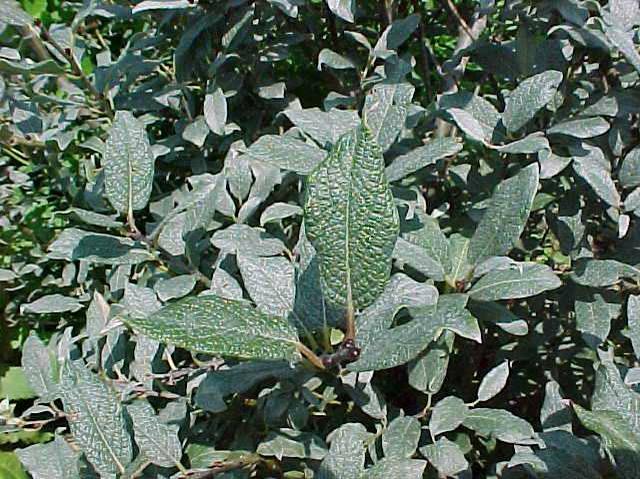Downy Willow (Salix Lapponum)
Downy Willow
Salix lapponum, commonly known as downy willow or Lapland willow, is native to alpine areas in Europe and Asia including Scandinavian areas within the Arctic circle. It is a densely-branched, deciduous shrub which typically grows to 5′ tall. Elliptic-oblong to lance-shaped leaves (to 2″ long) are downy olive green above and woolly gray green beneath. Silvery catkins with yellow to red anthers appear in spring just before or as the leaves emerge.
Genus name is the Latin name for this plant.
Specific epithet means of Lapland, northern Scandinavia.

Best grown in sandy or rocky, medium moisture soils in full sun to light shade. Tolerates poor soils.
| Hardiness zone | 3 - 7 |
| Sun light | Full Sun |
| Water | Medium |
| Maintenance | Medium |
Salix lapponum has not been extensively grown in the St. Louis area, and it is not yet clear how this alpine shrub will adapt to the St. Louis climate. Willows are generally susceptible to a number of disease problems including cankers, blights, galls, leaf spots, powdery mildew and rust. Potential insect pests generally include borers, caterpillars and scale.
Rock gardens. Slopes. Shrub borders. May be difficult to find in commerce.
| Common name | Downy Willow |
| Botanical name | Salix Lapponum |
| Plant type | Deciduous Shrub |
| Family | Salicaceae |
| Hardiness zone | 3 - 7 |
| Water | Medium |
| Maintenance | Medium |
| Flower color | Yellow To Red Anthers |
| Flowering period | April |
| Height | 3 - 5 Ft. |
| Width | 3 - 5 Ft. |